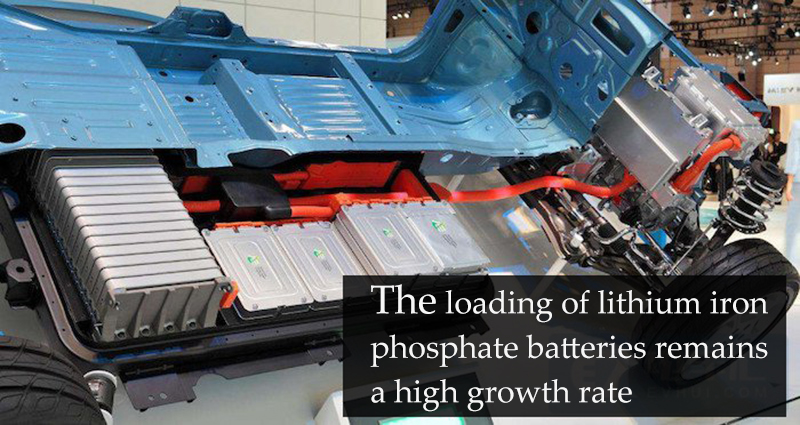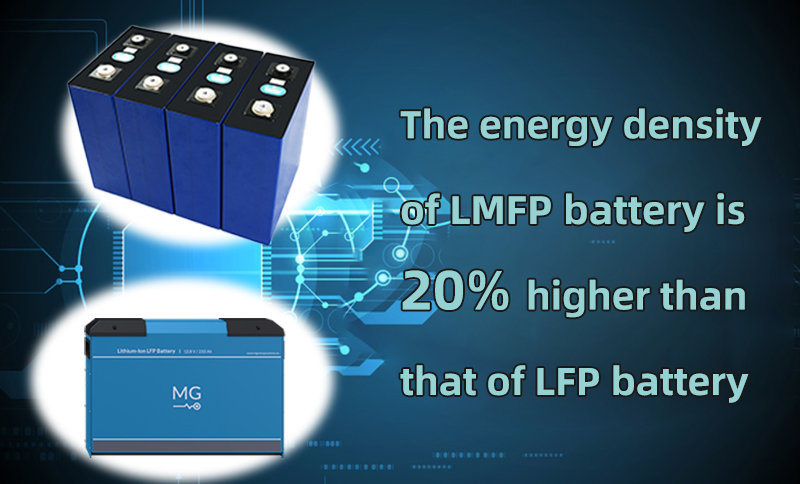
Main content:
With the rapid development of China's new energy vehicle industry, the demand for power batteries has increased significantly, and the requirements for cruising range have also continued to increase. At present, the industry has relevant research and layout on lithium iron manganese phosphate batteries. The energy density of the cathode of lithium iron batteries is close to the theoretical extreme value, and manganese-iron-lithium may become the second growth curve of lithium iron companies. Based on the advantages of safety and low cost, it can achieve energy density improvement.
1.The loading of lithium iron phosphate batteries remains a high growth rate
Lithium iron phosphate batteries have become the mainstream battery category for new energy vehicles in China at this stage, and have maintained a high growth rate. The data shows that from January to June 2022, the cumulative installed capacity of power batteries in China reached 110.1GWh, a cumulative increase of 109.8% year-on-year. Among them, the cumulative loading volume of ternary lithium batteries reached 45.6GWh, accounting for 41.4% of the total loading volume, with a cumulative year-on-year increase of 51.2%.

The cumulative installed capacity of lithium iron phosphate batteries reached 64.4GWh, accounting for 58.5% of the total installed capacity, with a cumulative year-on-year increase of 189.7%. Due to the advantages of low cost and strong safety, lithium iron phosphate batteries have surpassed ternary batteries in terms of output and vehicle loading, but the energy density of lithium iron phosphate batteries is close to the limit.
2.The energy density of LMFP battery is 20% higher than that of LFP battery
In 2022, the maximum energy density of the lithium iron phosphate battery system is 161.27Wh/kg, and this maximum value has hardly changed in the past two years. As an upgraded version of lithium iron phosphate, lithium iron manganese phosphate has a higher voltage platform, the energy density can be increased by about 15%, and the safety and low-cost characteristics of lithium iron phosphate cells are retained.
The data shows that compared with lithium iron phosphate, due to the existence of manganese ions, lithium iron manganese phosphate has a higher voltage platform, which can reach 4.1V, so the theoretical energy density is increased by 20% compared with lithium iron phosphate. At the same time, the low temperature performance of lithium iron manganese phosphate is also better than that of lithium iron phosphate.

Compared with the layered structure of ternary materials(cathode materials for preparing ternary lithium battery), the olivine-type structure of lithium iron phosphate adds additional structural support, so it is not prone to structural collapse during charging and discharging, and has good thermal stability, high safety and long service life. The production equipment for the production of lithium iron manganese phosphate batteries and the production of lithium iron phosphate batteries has little change, no need to rebuild the production line, and the change cost is low, which is economical.
The composite of lithium iron manganese phosphate with ternary 523, LCO and other materials can further integrate the advantages of materials, realize short-board complementarity, improve energy density, and then achieve more comprehensive and comprehensive battery performance. However, the corresponding production costs will also increase accordingly.
3.Numerous companies are actively deploying LMFP batteries
Battery companies and cathode material manufacturers are actively deploying the lithium iron manganese phosphate industry recently. The relevant person in charge of BYD said that various materials for batteries will be studied. The relevant person in charge of EVE and GOTION HIGH-TECH revealed that the company has a layout in lithium iron manganese phosphate. At present, battery companies with lithium iron manganese phosphate technical reserves include CATL, BYD, GOTION HIGH-TECH, etc. The above companies mainly focus on patent technology research and development and investment layout. As early as 2015, CATL applied for a patent for "modification of lithium iron manganese phosphate by introducing third-party elements".

BYD has publicly stated that lithium iron manganese phosphate is the company's new technical route. Previously, various manufacturers have deployed ternary high-capacity materials. This route has not become the mainstream, but the company continues to promote and actively reserve. In recent years, it has deployed ten patents remainder. In 2019, the FP1865140-15Ah prismatic lithium iron manganese phosphate lithium-ion battery independently developed by GOTION HIGH-TECH won the honorary title of "New Product in Anhui Province".
The cathode manufacturers that have a layout in the field of lithium iron manganese phosphate include Dynanonic and Lithitech. As of the first quarter of 2022, Dynanonic has applied for and obtained a total of 9 patents related to lithium iron manganese phosphate in China. Lithitech owns 8 patents involving lithium iron manganese phosphate, most of which are process patents for improving the performance of lithium iron manganese phosphate and related patents for structural modification by introducing third-party elements.
4.The market development trend of LMFP batteries is improving
The raw material cost of lithium iron manganese phosphate is close to that of lithium iron phosphate. The main difference is the change in the amount of manganese source required. Each KWh LMFP-46 cathode requires 0.39kg of iron source and 0.25kg of manganese source. It is estimated that the demand for lithium iron manganese phosphate will reach 294,000 tons in 2025, and the market space will reach 17.6 billion RMB. Lithium iron manganese phosphate is a potential substitute material for lithium iron phosphate and ternary 5 series.
It is estimated that by 2025, the replacement demand for lithium iron phosphate for lithium iron phosphate in the field of electric vehicles will reach 56GWh, and the demand for combination with ternary compound will reach 28GWh , the overall demand is about 84GWh. When it comes to ternary materials, you may want to know about the leading companies and related layouts in the ternary material industry. Top 10 lithium battery ternary material companies on our website will provide you with all the information you want to know.
















